Wondering why cold brew coffee tastes less acidic than your regular hot coffee? That smooth, mellow flavor isn’t just your imagination—it’s science. The cold brewing process extracts coffee differently, creating a completely different acid profile in your cup.
When you brew coffee with cold water over a longer period, you’re extracting fewer acids compared to hot brewing methods. This results in cold brew that’s typically 67% less acidic than hot coffee, making it gentler on your stomach and teeth. For coffee lovers with acid sensitivity or reflux issues, this brewing method offers a way to enjoy your favorite beverage without the uncomfortable side effects.
What Makes Cold Brew Coffee Different
Cold brew coffee stands apart from traditional hot coffee in several key ways. The brewing method uses cold water instead of hot, fundamentally changing how compounds are extracted from the coffee grounds. This cold extraction process typically takes 12-24 hours rather than the few minutes required for hot brewing methods.
Temperature plays a crucial role in the extraction process. Hot water (195-205°F) aggressively pulls out acids, oils, and flavor compounds quickly. Cold water, by contrast, gently extracts compounds over a longer period, resulting in a smoother taste profile with notably reduced acidity.
The extended steeping time allows for a different chemical reaction between the water and coffee grounds. Coffee contains over 1,000 aroma compounds, and the cold brew method extracts these differently, emphasizing the chocolatey, nutty, and caramel notes while minimizing the bright, citrusy ones associated with acidity.
The grind size for cold brew is typically coarser than for hot coffee. This coarse grind reduces the surface area exposed to water, further limiting acid extraction. Many cold brew enthusiasts, like Rikki Manny, swear by using a very coarse grind—similar to sea salt—to achieve the perfect balance of flavor without unwanted acidity.
Cold brew’s concentration is another distinguishing factor. The standard ratio of 1:4 or 1:5 (coffee to water) creates a concentrated coffee that’s often diluted before drinking. This concentration gives cold brew its characteristic bold flavor even though having 67% less acidity than hot coffee.
The Science Behind Cold Brew Coffee Acidity
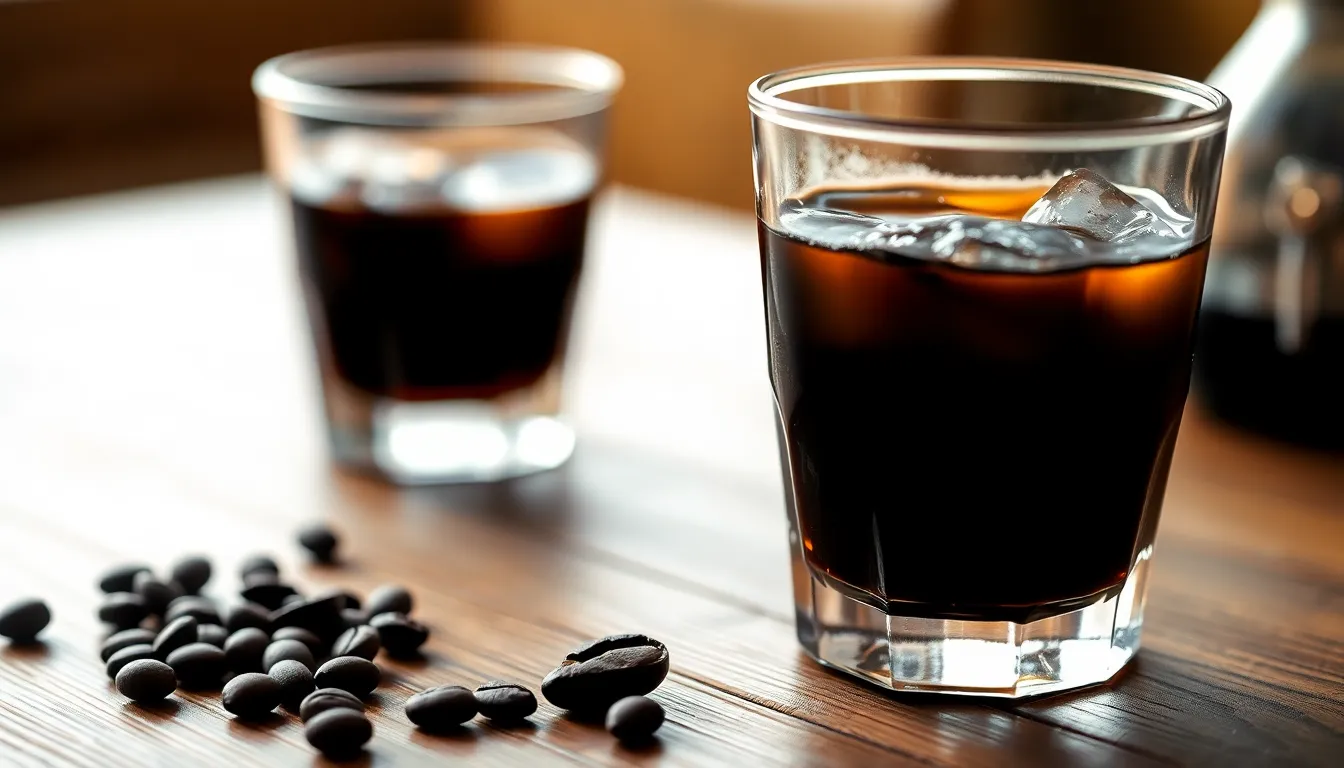
Coffee acidity results from various organic acids that develop during growing, processing, and brewing. These compounds—including chlorogenic and quinic acids—significantly impact both flavor profiles and perceived sharpness in your cup. Temperature plays a crucial role in acid extraction: hot water pulls out a wider range of acids more aggressively, while cold water extracts acids more selectively during the extended steeping process.
Understanding pH Levels in Coffee
The pH measurements of cold brew and hot brew coffees show surprising similarities, typically ranging between 4.85 and 5.13. Both beverages qualify as mildly acidic on the pH scale, but this measurement tells only part of the story. pH doesn’t account for total acid concentration (known as titratable acidity), which consistently appears higher in hot brew coffee. Hot water extraction pulls more non-deprotonated acids from coffee grounds, contributing to increased antioxidant activity and a stronger perception of acidity on your palate.
Cold Brew vs. Hot Brew Acidity Comparison
Total acid content differs significantly between brewing methods, with hot brew containing higher concentrations of titratable acids than cold brew. This chemical difference explains why many coffee drinkers experience hot brew as more acidic overall.
Cold brew’s characteristic smoothness comes from its lower extraction of harsh acids, creating a gentler experience for your digestive system. Many coffee enthusiasts with acid sensitivity report less irritation with cold brew, likely due to its unique acid profile triggering different inflammation responses.
Flavor profiles vary dramatically between the brewing methods. Acids like citric acid contribute brightness and tanginess to coffee flavors. Cold brew’s reduced acid extraction produces a noticeably less tangy, less bitter taste experience, with most cold brews delivering mellow, rounded flavor notes.
Antioxidant levels also vary between brewing methods, with hot brew coffee demonstrating higher antioxidant activity because of its more thorough acid extraction process.
It’s worth noting that regular iced coffee—made by brewing hot coffee and then cooling it—maintains the acidity levels of hot brew. The reduced acidity benefit applies specifically to the cold water extraction method itself, not simply to coffee served cold.
Health Benefits of Lower Acidity in Cold Brew
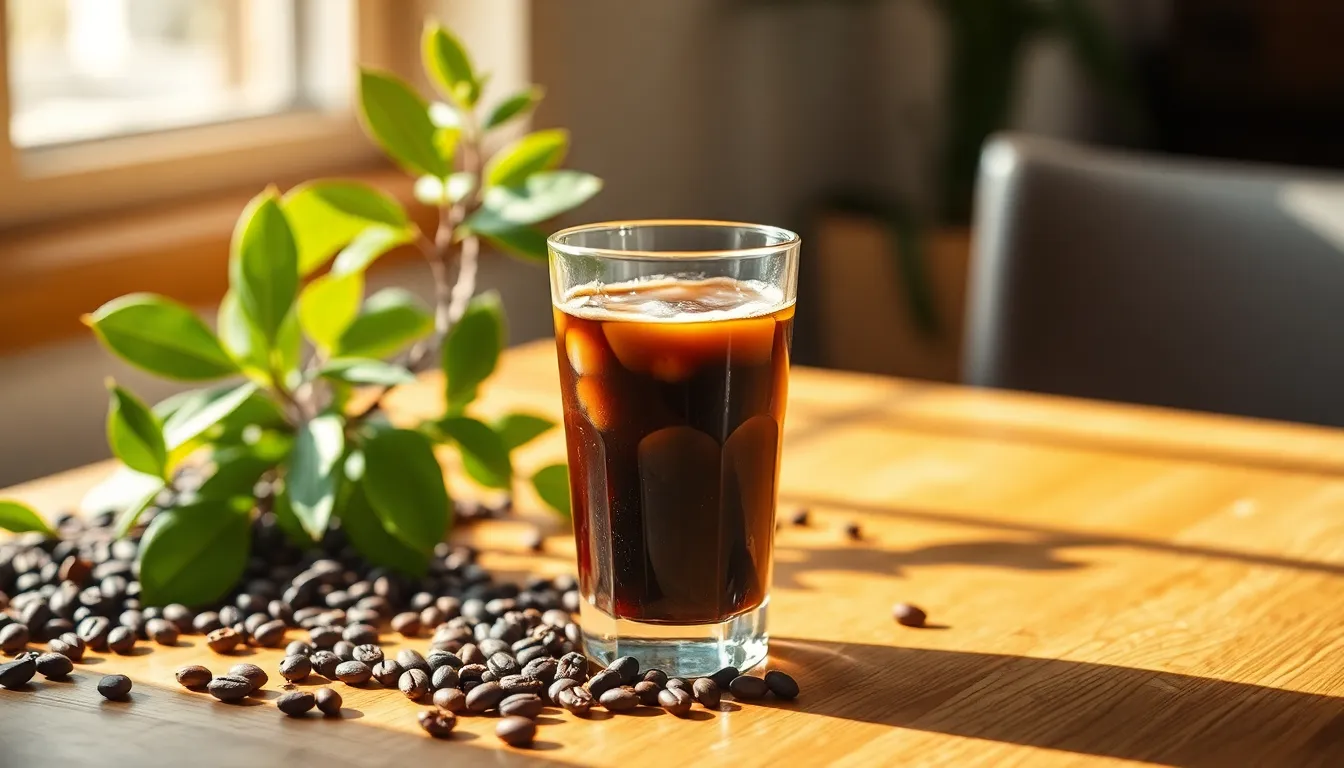
Cold brew coffee’s reduced acidity offers several health advantages, particularly for those with digestive sensitivities. The unique cold extraction process results in coffee that contains fewer total acids while maintaining its rich flavor profile and caffeine content.
Gentler on Sensitive Stomachs
Cold brew coffee contains fewer total acids than hot brewed varieties, making it significantly easier on your digestive system. Scientific studies confirm that the lower titratable acid content creates less irritation to the stomach lining when compared to traditional hot coffee. This gentler composition means you can enjoy your coffee without experiencing the uncomfortable burning or irritation that often accompanies hot brewed coffee consumption. Many coffee drinkers with sensitive digestive systems report being able to drink cold brew without the usual discomfort they experience from regular coffee.
Reduced Acid Reflux Symptoms
People prone to acid reflux or heartburn typically experience fewer symptoms when drinking cold brew instead of hot coffee. The lower acid concentration means less stimulation of stomach acid production, reducing the likelihood of acid traveling back up into the esophagus. Cold brew’s smoother profile doesn’t trigger the same reflux response that hot coffee often does, allowing you to enjoy your caffeine fix without the painful aftermath. This benefit makes cold brew an excellent alternative for coffee lovers who’ve previously had to limit or eliminate coffee from their diet due to GERD or reflux concerns.
Cold brew’s smoother taste profile also means you’re less likely to need milk or sugar to mask bitterness, especially in nitro cold brews made from darker roasts. These varieties maintain their caffeine content while further reducing acidity, creating an enjoyable drinking experience without additional ingredients that might trigger digestive issues.
Though cold brew may have slightly lower antioxidant activity compared to hot brew coffee, particularly in darker roasts, this trade-off proves worthwhile for those prioritizing digestive comfort over maximum antioxidant intake.
Factors That Affect Cold Brew Coffee Acidity
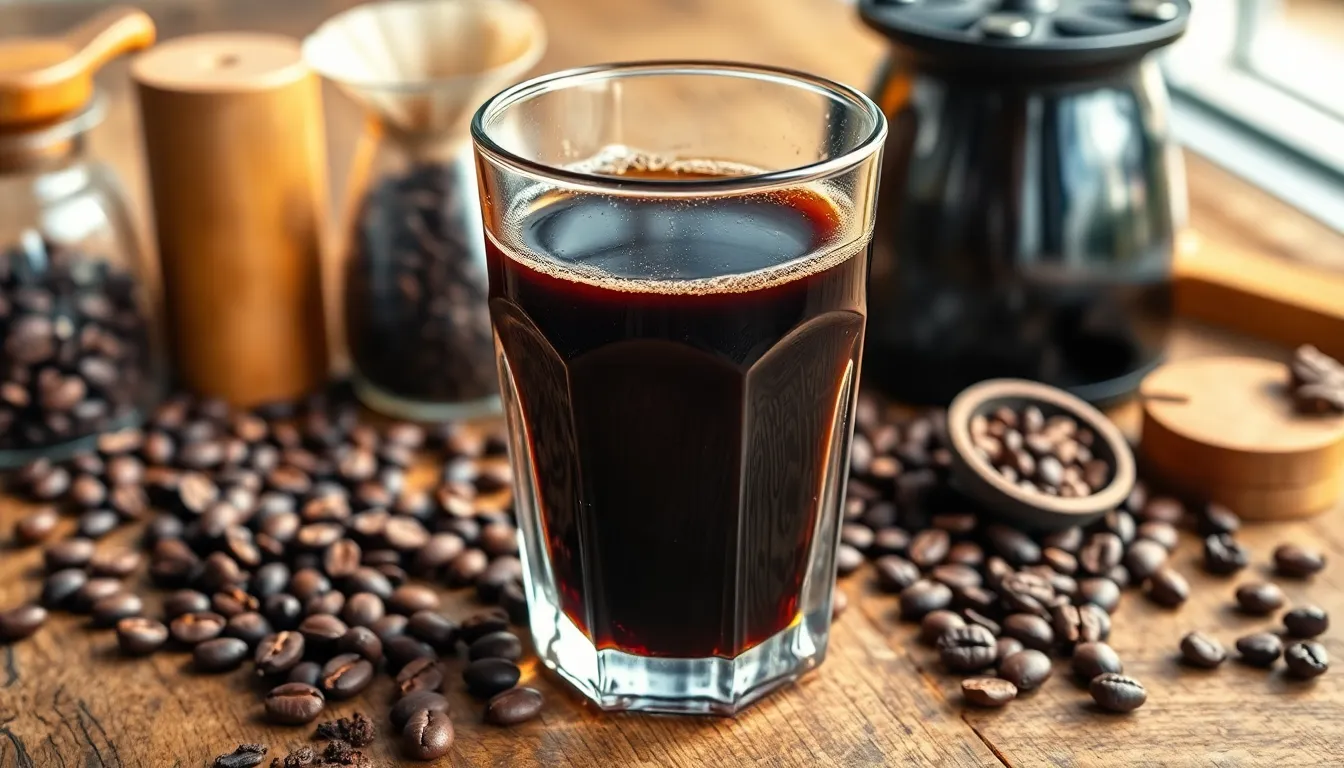
Cold brew coffee’s signature low acidity doesn’t happen by accident—it’s the result of several key variables working together. Understanding these factors helps you control the acidity level in your cold brew and create your perfect cup. Let’s explore the major elements that influence cold brew’s acid profile.
Bean Selection and Roast Level
Coffee beans and their roast level play a crucial role in determining your cold brew’s acidity. Lighter roasts retain more chlorogenic acids that contribute to brightness and perceived acidity in the final cup. These acids break down into quinic and caffeic acids during brewing, affecting the overall flavor profile. Darker roasts, by contrast, contain lower chlorogenic acid levels due to the extended roasting process. This reduction creates a smoother, less acidic cold brew experience. Chemical analysis confirms that cold brew made from darker roasts measures lower in acidity both instrumentally and in taste tests compared to those made from light roasts.
Brewing Time and Temperature
The cold brew method’s defining characteristics—cold water and extended steeping time—directly impact its acidity levels. Cold temperatures extract fewer chlorogenic acids and significantly reduce their breakdown into acidic byproducts during the typical 12-24 hour steeping period. This gentle extraction process leads to measurably lower overall acidity and creates the smooth flavor profile cold brew fans love. Hot brewing, in comparison, rapidly extracts more acids, producing a brighter, more acidic cup. Research demonstrates that cold brew coffee consistently shows a higher pH (less acidic) and lower total acid concentration than its hot brewed counterpart, with cold brew typically measuring between 4.85 and 5.10 on the pH scale.
Grind Size and Water Quality
The coarseness of your coffee grounds affects acid extraction during the cold brew process. Coarser grinds expose less surface area to water, extracting acids more slowly and contributing to lower acidity in the final product. Finer grinds might increase acid extraction but risk over-extraction and unwanted bitterness. Water quality serves as another important variable in the equation—its mineral content and pH balance influence acid extraction and flavor development throughout the brewing process. The mineral composition in your water interacts with coffee compounds differently, potentially improving or diminishing perceived acidity. Many cold brew enthusiasts prefer filtered water to achieve consistent results and balanced flavor profiles without unwanted mineral interference.
How to Further Reduce Acidity in Cold Brew
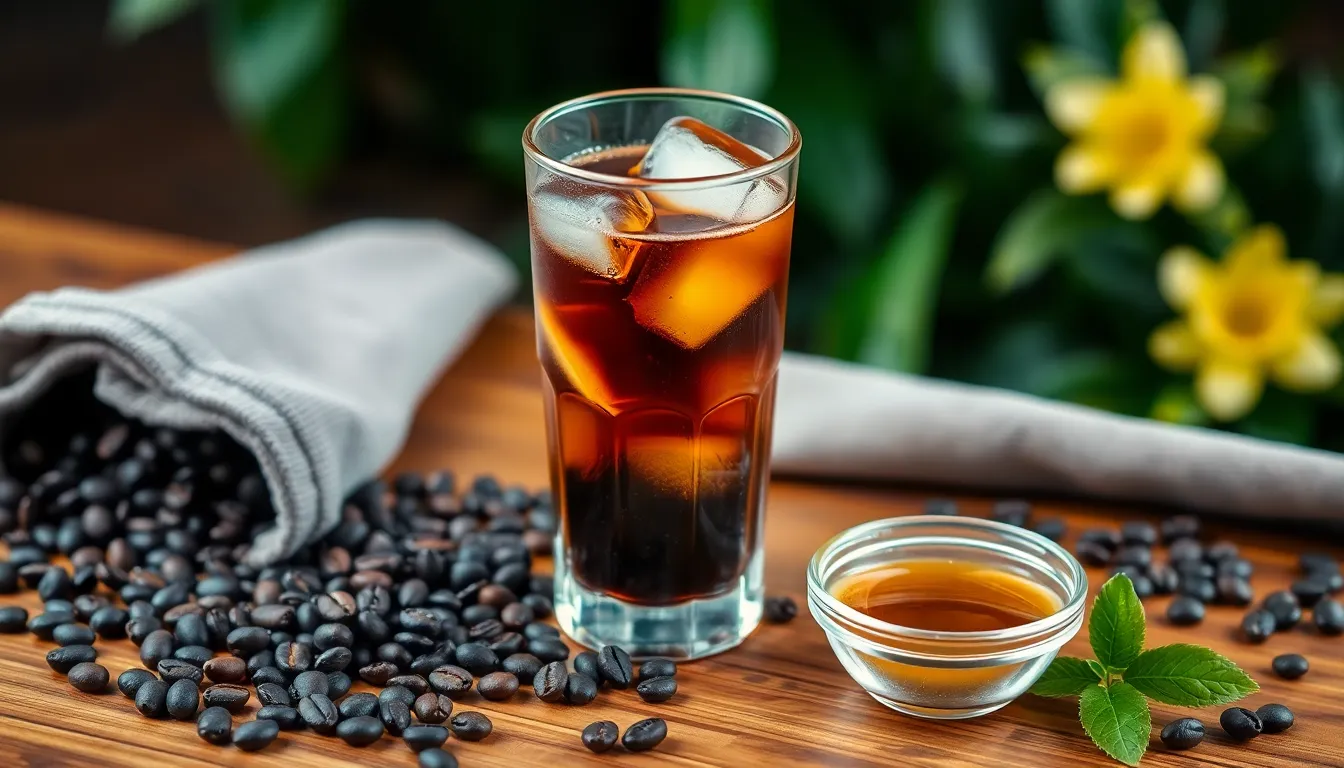
Cold brew coffee already offers a less acidic alternative to hot brew, but several techniques can minimize acidity even further. These methods can transform your coffee experience, making it gentler on your stomach while preserving rich flavor.
Natural Additives and Methods
Dark roast beans create a naturally less acidic cold brew because the roasting process breaks down chlorogenic acids. Experiment with extending your steeping time or using coarser grinds to influence extraction rates without sacrificing flavor complexity. Adding water or milk to your finished cold brew dilutes the concentration of acids per serving, resulting in a smoother taste profile with reduced perceived acidity.
A pinch of baking soda or using mineral-rich alkaline water can naturally neutralize acids in your cold brew. Natural sweeteners like maple syrup or honey balance acidity by improving perceived sweetness rather than contributing additional acid. Water quality significantly impacts extraction outcomes – filtered or mineral water with a balanced pH helps minimize unwanted acidic notes in your final brew.
For optimal results, combine multiple techniques. Choose darker roasts for your base, optimize your brewing parameters with longer steeping times, dilute appropriately, and incorporate natural additives that complement your preferred flavor profile. These adjustments make cold brew exceptionally gentle for acid-sensitive individuals while maintaining its distinctive smooth character.
Tasting Notes: How Acidity Affects Flavor Profile
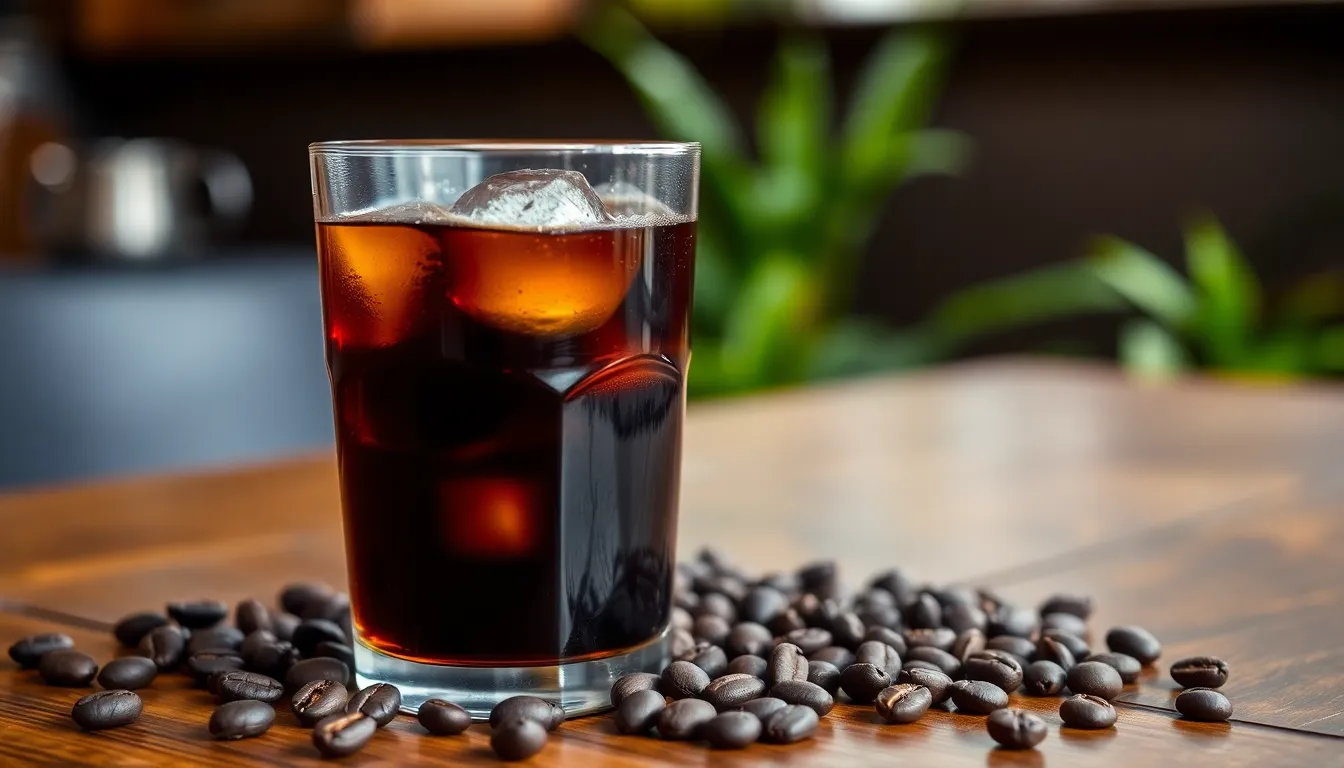
Cold brew coffee’s distinctive flavor profile stems directly from its unique acid composition. The reduced acidity creates a smoother, sweeter taste that appeals to many coffee enthusiasts who find hot brew too harsh. This difference isn’t just perceptible—it fundamentally transforms the coffee drinking experience.
Flavor Characteristics of Low-Acid Cold Brew
Low acidity in cold brew coffee enhances exact flavor notes while minimizing others. The extraction process yields fewer chlorogenic acids and slows their breakdown, resulting in a noticeably smoother taste with reduced bitterness. Cold brew typically highlights chocolatey, nutty, and caramel undertones that remain muted in hot brewing methods. These rich, mellow flavors dominate the profile because the cold water extracts less of the citric and malic acids responsible for bright, tangy notes in hot coffee.
Comparing Taste Profiles: Cold Brew vs. Hot Brew
Cold brew and hot brew coffee offer dramatically different tasting experiences due to their acid content. Hot brew coffee contains higher concentrations of various organic acids, creating that characteristic brightness and complexity many coffee lovers appreciate. The pH of both beverages may be similar (ranging from 4.85 to 5.10), but cold brew’s gentler extraction of harsh acids results in:
| Flavor Attribute | Cold Brew | Hot Brew |
|---|---|---|
| Bitterness | Lower | Higher |
| Sweetness | More pronounced | Less pronounced |
| Acidity perception | Mild, smooth | Sharp, bright |
| Flavor notes | Chocolate, nuts, caramel | Fruity, floral, citrus |
| Mouthfeel | Rounded, full | Crisp, lively |
How Reduced Acidity Enhances Drinkability
The lower acidity in cold brew significantly improves its drinkability for many coffee consumers. Without the sharp acidic edge of hot coffee, cold brew provides a rounded flavor experience that feels gentle on the palate. This smooth character makes cold brew approachable even without additives like milk or sugar that many use to mask acidity in hot coffee. The reduced presence of quinic and caffeic acids (breakdown products of chlorogenic acids in hot brewing) minimizes the astringent sensation often associated with coffee, creating a more pleasant mouthfeel throughout the drinking experience.
Conclusion
Cold brew coffee stands out as a gentler alternative for those with sensitive stomachs while offering a distinctly smooth flavor profile. Its reduced acidity comes from the fundamental science of extraction where cold water selectively pulls fewer acids from coffee grounds during the extended brewing process.
You don’t need to sacrifice your coffee enjoyment if you struggle with digestive issues. By selecting darker roasts using coarser grinds and extending your steep time you can further minimize acidity while maximizing flavor.
Whether you’re seeking relief from reflux or simply prefer coffee’s chocolatey undertones without the brightness cold brew delivers a mellow experience that highlights coffee’s natural sweetness. This brewing method truly transforms how you can enjoy coffee by focusing on balance rather than intensity.
Frequently Asked Questions
Why is cold brew coffee less acidic than hot coffee?
Cold brew coffee is less acidic because the cold water extraction process pulls fewer acids from the coffee grounds. When coffee steeps in cold water for 12-24 hours, the lower temperature extracts flavor compounds more selectively, resulting in approximately 67% less acidity compared to hot brewed coffee. This makes cold brew gentler on sensitive stomachs and gives it a smoother taste profile.
How long does it take to make cold brew coffee?
Cold brew coffee typically requires 12-24 hours of steeping time, unlike hot coffee which brews in minutes. This extended extraction period allows the cold water to slowly pull out flavors and caffeine while leaving behind many of the harsh acidic compounds. The longer brewing time is essential for developing cold brew’s characteristic smooth flavor profile.
What’s the difference between cold brew and iced coffee?
Cold brew is made by steeping coffee grounds in cold water for 12-24 hours, resulting in lower acidity. Iced coffee is regular hot coffee that’s been cooled down, retaining the same acidity levels as hot coffee. While both are served cold, they have different flavor profiles – cold brew is smoother and less bitter, while iced coffee maintains the bright, acidic notes of hot coffee.
Is cold brew better for people with acid reflux?
Yes, cold brew coffee is generally better for people with acid reflux or heartburn. Its lower acid concentration reduces stomach acid production and the likelihood of reflux episodes. Many people who experience discomfort with regular coffee find they can enjoy cold brew without digestive issues. The smoother taste also means less need for acidic additives like lemon or citrus flavorings.
Does cold brew have the same caffeine content as regular coffee?
Cold brew typically contains more caffeine than regular hot coffee when compared in concentrated form. However, it’s usually diluted before drinking, which brings the caffeine content to similar levels as hot coffee. The exact caffeine content varies depending on factors like coffee-to-water ratio (typically 1:4 or 1:5 for cold brew concentrate), bean type, and brewing time.
What type of beans are best for making low-acid cold brew?
Dark roast beans are optimal for making low-acid cold brew. Dark roasting breaks down more of the chlorogenic acids in coffee beans, resulting in a smoother, less acidic brew. Beans from low-elevation regions like Brazil, Sumatra, and Nicaragua naturally contain fewer acids and produce a mellower cold brew. Choosing beans labeled as “low acid” can further reduce acidity.
How does grind size affect cold brew acidity?
Coarser grinds result in less acidic cold brew. Finely ground coffee has more surface area exposed to water, leading to greater acid extraction. Using a coarse grind (similar to raw sugar consistency) reduces surface area contact and limits acid extraction while still allowing enough flavor compounds to be released. Most cold brew recipes specifically call for coarse grinds for this reason.
Can I make cold brew even less acidic?
Yes, you can further reduce cold brew acidity by using dark roast beans, extending steeping time beyond 18 hours, using coarser grinds, and adding a tiny pinch of baking soda to neutralize acids. Diluting with milk (especially non-dairy alternatives like almond or oat milk) can also reduce perceived acidity. Filtered water with a neutral pH helps create a balanced, low-acid result.
Does cold brew coffee taste different because of its lower acidity?
Absolutely. Cold brew’s lower acidity creates a notably different flavor profile that many people prefer. Without the bright, tangy notes from acids like citric acid, cold brew highlights chocolatey, nutty, and caramel flavors naturally present in coffee. The reduced acidity also creates a smoother mouthfeel with less astringency and bitterness, making it naturally sweeter and more approachable.
Is cold brew coffee healthier than hot brewed coffee?
Cold brew isn’t necessarily healthier overall, but it offers specific health advantages for certain people. Its lower acidity makes it gentler on sensitive stomachs and better for those with acid reflux or digestive issues. Hot brewed coffee contains slightly more antioxidants due to its more thorough extraction process. The health benefits depend on individual needs and sensitivities.

